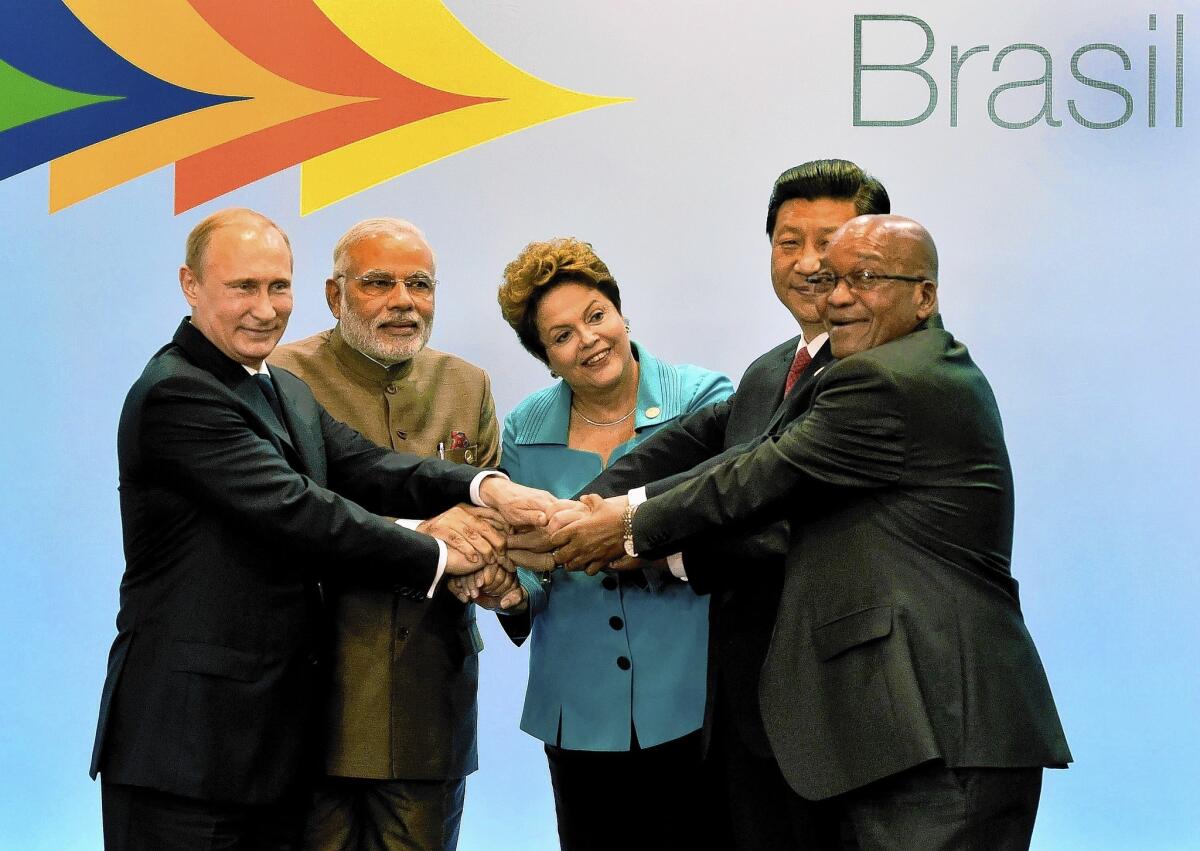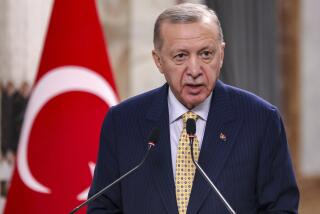‘BRICS’ nations to form development bank to rival World Bank, IMF

REPORTING FROM RIO DE JANEIRO — The so-called BRICS countries agreed to form an international development bank with aspirations to challenge the dominance of the World Bank and the International Monetary Fund.
Leaders of Brazil, Russia, India, China and South Africa said Tuesday that the New Development Bank will start with $50 billion in capital and $100 billion as a currency reserve fund for liquidity crises. Operating details still need to be resolved.
Still, the BRICS bank, which could add more member nations, represents a bid to expand the influence of the BRICS emerging markets and act as a counterbalance to institutions run by the U.S. and other developed nations, experts said.
“This is about the consolidation of BRICS 2.0,” said Marcos Troyjo, professor of international and public affairs at Columbia University and co-director of the BRICLab Center. “If BRICS 1.0 was about capturing investor attention to the scale of their economic relevance, BRICS 2.0 is about embarking on institution building.”
The BRICs acronym was coined by Goldman Sachs Group Inc. economist Jim O’Neill in 2001 to describe the four large emerging markets — Brazil, Russia, India and China — that could play a large role in global economic growth. They began meeting for periodic summits in 2009, and were later joined by South Africa.
As developing countries began playing a larger role in the world economy, their leaders repeatedly complained that they have not been given correspondingly larger voices in international financial institutions such as the World Bank and the IMF, both based in Washington. The U.S. typically appoints the World Bank president, and European countries appoint the IMF chief.
“International governance structures designed within a different power configuration show increasingly evident signs of losing legitimacy and effectiveness,” said the official statement signed by the BRICS leaders, who met in Fortaleza, Brazil, on Tuesday. “We believe the BRICS are an important force for incremental change and reform of current institutions toward more representative and equitable governance.”
Brazilian President Dilma Rousseff, Russian President Vladimir Putin, Indian Prime Minister Narendra Modi, Chinese President Xi Jinping and South African President Jacob Zuma hammered out some of the final details before signing the agreement Tuesday.
Among the terms are that the bank will be in Shanghai, its first president will be from India, and the first chair of the board of directors will be from Brazil.
On Wednesday, the BRICS leaders will meet with the heads of South American countries through the intergovernmental Union of South American Nations, which was founded in 2008.
The new bank is expected to make loans for development and infrastructure projects. It also will function as an incubator for development expertise from other emerging economies.
Other countries, such as Indonesia, Mexico or Turkey, could eventually join the bank, Troyjo said, noting that BRICS countries have seen their growth slow over the last few years from the peak of international investor interest in emerging market countries.
“The only thing they may have in common is the use of some kind of state capitalism in their growth,” he said. “The BRICS are needing to reinvent themselves, and it’s unlikely their route forward can be the same route that got them here.”
More to Read
Inside the business of entertainment
The Wide Shot brings you news, analysis and insights on everything from streaming wars to production — and what it all means for the future.
You may occasionally receive promotional content from the Los Angeles Times.








